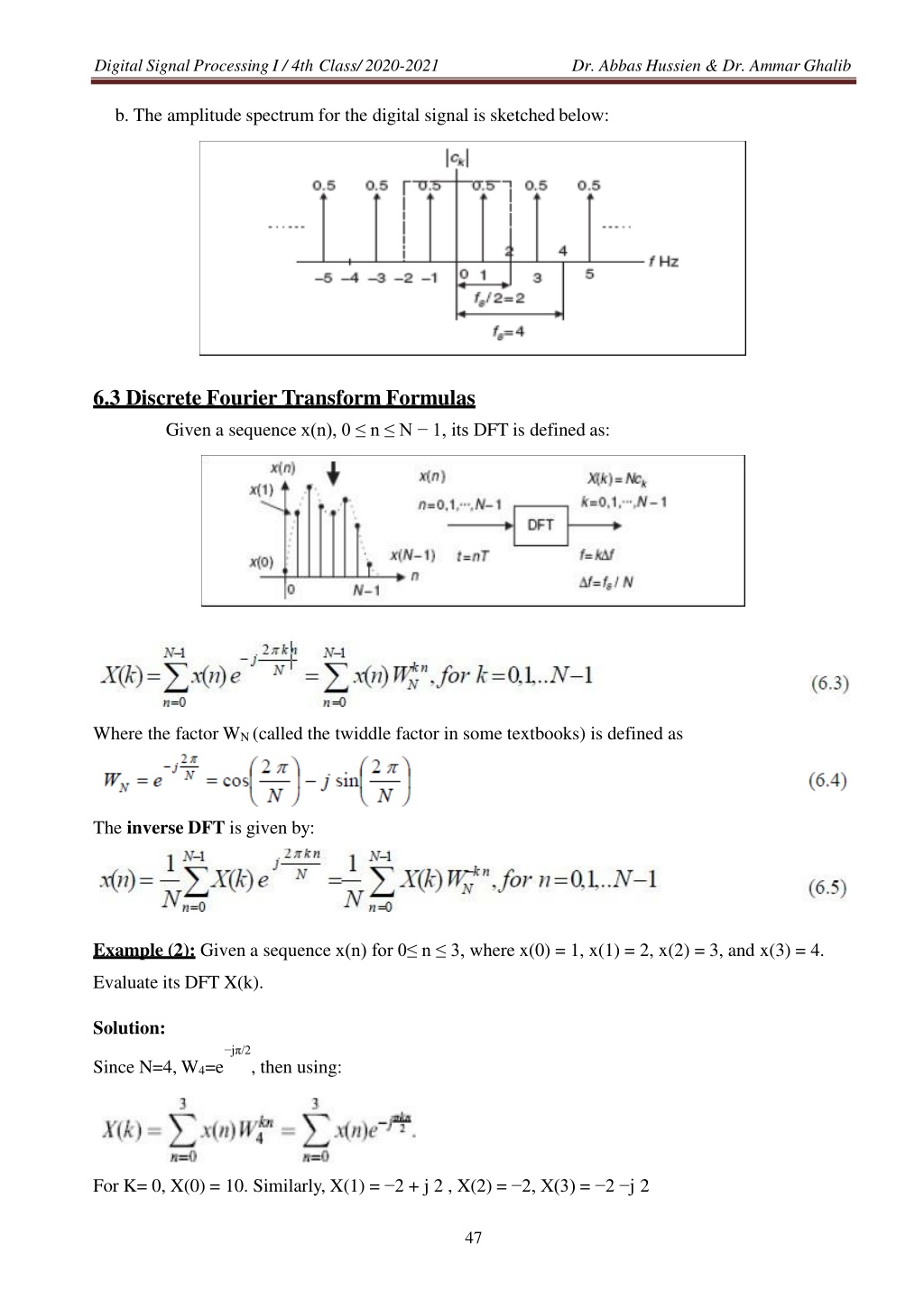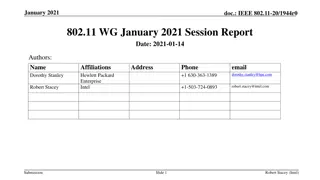
Understanding Digital Signal Processing Concepts and FFT Algorithms
Explore the fundamentals of Digital Signal Processing including DFT, amplitude spectrum, frequency resolution, and FFT algorithms like decimation-in-frequency. Learn about sampling rates, frequency mapping, and efficient computation techniques. Dive into the world of signal processing in this comprehensive guide.
Download Presentation

Please find below an Image/Link to download the presentation.
The content on the website is provided AS IS for your information and personal use only. It may not be sold, licensed, or shared on other websites without obtaining consent from the author. Download presentation by click this link. If you encounter any issues during the download, it is possible that the publisher has removed the file from their server.
E N D
Presentation Transcript
Digital Signal Processing I / 4th Class/ 2020-2021 Dr. Abbas Hussien & Dr. AmmarGhalib b. The amplitude spectrum for the digital signal is sketchedbelow: 6.3 Discrete Fourier Transform Formulas Given a sequence x(n), 0 n N 1, its DFT is defined as: Where the factor WN (called the twiddle factor in some textbooks) is defined as The inverse DFT is given by: Example (2): Given a sequence x(n) for 0 n 3, where x(0) = 1, x(1) = 2, x(2) = 3, and x(3) = 4. Evaluate its DFT X(k). Solution: j /2 Since N=4, W4=e , then using: For K= 0, X(0) = 10. Similarly, X(1) = 2 + j 2 , X(2) = 2, X(3) = 2 j 2 47
Digital Signal Processing I / 4th Class/ 2020-2021 Dr. Abbas Hussien & Dr. AmmarGhalib Mapping the frequency bin k to its corresponding frequency is as follows: Since ws = 2 fs ,then: We can define the frequency resolution as the frequency step between two consecutive DFT coefficients to measure how fine the frequency domain presentation is and achieve. Example (3): In example (2), If the sampling rate is 10 Hz, a. Determine the sampling period, time index, and sampling time instant for a digital sample x(3) in time domain. b. Determine the frequency resolution, frequency bin number, and mapped frequency for each of the DFT coefficients X(1) and X(3) in frequencydomain. Solution: 48
Digital Signal Processing I / 4th Class/ 2020-2021 Dr. Abbas Hussien & Dr. AmmarGhalib Fast Fourier Transform (FFT) 1. Definition of FFT FFT is a very efficient algorithm in computing DFT coefficients and can reduce a very large amount of computational complexity (multiplications). Consider the digital sequence x(n) consisting of 2msamples, where m is a positive integer the number of samples of the digital sequence x(n) is a power of 2, N = 2, 4, 8, 16, etc. If x(n) does not contain 2m samples, then we simply append it with zeros until the number of the appended sequence is equal to an integer of a power of 2 data points. The number of points N=2m, where the stages m=log2N. In this section, we focus on two formats. One is called the decimation in- frequency algorithm, while the other is the decimation-in-time algorithm. They are referred to as the radix-2 FFT algorithms. 1. Method of Decimation-in-Frequency (Reduced DIF FFT) Beginning with the definition of DFT: j2 / N is the twiddle factor, and N = 0, 2, 4, 8, 16, Equation (7.6) can be Where, WN= e expanded as: If we split equation (7.7): Then we can rewrite as a sum of the following two parts: 49
Digital Signal Processing I / 4th Class/ 2020-2021 Dr. Abbas Hussien & Dr. AmmarGhalib Modifying the second term in Equation (7.9) yields: Now letting k = 2m as an even number achieves: While substituting k = 2m + 1 as an odd number yields: Where, a(n) and b(n) are introduced and expressed as: 50



















